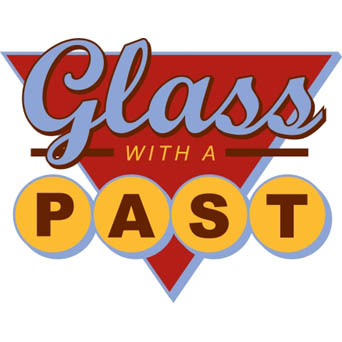Q & A Mondays are answers to reader questions submitted via email or social media. All personal information has been removed for privacy reasons and messages have been edited for clarity. You may submit your own questions through the About/Contact page.
Q: Hi Jodi!
I have been making glasses out of wine bottles for a while now using the etching blade, hot/cold water, hand sanding method to make water glasses for a wedding (very hefty project using that method!) and want to continue to make them as they were such a hit. I just stumbled across your advanced technique post which is very inspiring! I am going to invest in a saw but had some questions about the kiln (I have never used a kiln before). What kiln do you use? Approximately how long does it take to get it to temperature/how long does it take to fire a set of glasses? I don’t know how to interpret/use a kiln schedule so I don’t know how to use the one you posted to estimate how much time it will require.
Thank you for any kiln advice you may have!
A: I wish you lived close to me, I have a store that would love more wine bottle glasses, and I have no time to make them!
I use a very large Denver glass kiln to fire polish my wine bottle glasses, but you don’t need to go that route, what you need is something that is around 12-18″ across and at least as deep as the glasses you are making, so probably 6-9″ deep. You must have one with a digital controller.
The firing schedule is programmed into the controller following that particular controller’s instructions. (For example, I have one kiln that does degrees per minute, and one that does degrees per hour). The kiln slowly ramps up the heat until the glass is shiny, but hasn’t lost its shape, then slowly ramps down to minimize the internal stress in the glass. It typically takes about 10-12 hours, and the electricity cost is somewhere in the $1-$2.50 range depending on the kiln size and your local rates. You would be able to do as many as would fit in your kiln with about 1/2″ clearance around each.
Firing schedules are arranged in segments, with one segment per line. Typically something like this:
segment 1: 250/hr to 1100, hold 10
segment 2: 9999/hr to 1060, hold 60 then off
Segment1: this is saying that your kiln will heat up at 250 degrees F per hour until it reaches 1100F, and then hold steady at that temperature for 10 minutes. So, this segment would take approximately 4.5 hours.
Segment 2: 9999 or AFAP or 0000 mean as fast as possible and are used for very rapid heating at the top speed of the kiln OR cooling as fast as possible, which means that the kiln is not heating at all and the temperature is dropping as fast as the kiln will cool.
I would check the used classified ads in your area for kilns, I see some good deals regularly in my area. I’m happy to help with any other questions (and guaranteed more quickly than I answered this message, I was teaching and got waaaaay behind on email!)
Hope that helps!
Jodi
Q: Do you ever cut the neck top ring and bottle bottom off before you slump the bottle into a bottle mold?
A: Yes, I have cut the bottom off of a bottle before slumping, my personal preference is to full fuse the bottle flat first, and then slump into a bottle mold, as there is a lot less slippage down the sides of the mold as the bottle slumps.
Cutting the bottom off will give you a perfectly straight line across the bottom of the bottle, rather than a big lump of glass as the bottom tips over and melts into a big blob. And, if the neck is too long for the mold, you can certainly cut the top ring off. I have a friend whose kiln is just a hair too small to slump bottles, so she always cuts 1″ off the neck first. It is barely noticeable after fusing.
Hope that helps!
Jodi
Q: I have been able to remove the labels but don’t know the best way to reattach them to use outdoors or on something to be washed. Any ideas would much appreciated thanks
A: Based on lots of comments from other glass people, it seems like using a Modge Podge washable decoupage product is the best way. I can’t remember the exact name, although I suspect it won’t be to hard to find. It’s reputed to be top rack dishwasher safe and waterproof.
Hope that helps!

